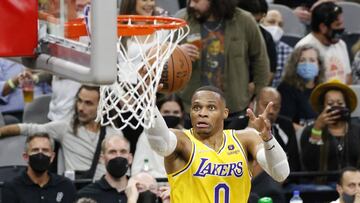How does NBA free agency work? Difference between restricted and unrestricted free agents
The NBA will open up its free agent market on Thursday afternoon. Teams can negotiate with players, deals won’t be made official until July 6th at noon.

There are some blockbuster deals that will be made over the next week or so as we approach the opening of the NBA’s free agent market.
Executives around the league have gone from studying and preparing for the NBA Draft, to diving right into the pool of free agents up for grabs this offseason. The market is stacked with former MVPs, scoring champions and NBA Champions but many of them have a very lucrative offer to stay put.
A player becomes a free agent when their contract with a particular team comes to an end, which frees them up to renegotiate a new contract with that team, or search for another team willing to pay them more money. There are a couple ways of becoming a free agent depending on the contract that is terminating.
Restricted Free agent
The underlying difference between unrestricted free agents and restricted agents is what happens when a deal is reached with another team. Restricted free agents have the option to explore the market and listen to offers from any team. If the player and new team come to an agreement, then the original team has a chance to keep the player if they can match the offer made by the new team.
Restricted free agent situations happen in a few different circumstances. The first instance is following the fourth year of rookie “scale” contracts for former first round draft picks. Another instance occurs for any veteran free agents who have ben in the league for three seasons or less, except first round draft picks who have just ended his second or third seasons in the team doesn’t exercise it’s option to extend the rookie contract. The last way a restricted free agent hits the market is if a player is coming off a two-way contract was on an NBA active or inactive roster for 15 days or more in the previous season.
Unrestricted Free agent
For unrestricted free agents, it’s much more simple. They hit the market unattached to their former team. They are free to negotiate with that team, but they also are allowed to speak with any other team without the threat of their original team swooping in and matching an offer.
The only time an unrestricted free agent is potentially tied to their original team is when they have a player option. In this case, the player holds all control. They have a set salary that is on the table from their existing team, and if it meets their desires they sign it and are with that team for one more year, or how every long the contract says.
Moratorium
In the next few days, if you are paying close attention, you may hear a word you haven’t heard before. The Free Agency Moratorium is the period where negotiations are opened up for players and teams, but no deals can be made. In this case, the Moratorium will stretch from July 1 until 12:01 p.m. ET on July 6th. There are a few instances where deals can be made in that time, but those deals usually have to do with rookie contracts, and in some situations veteran restricted free agents.
Now that you are up to date with the terminology, and the basics of free agent deals, the next couple weeks should be pretty interesting as we watch the shape of the NBA shift as stars look for a new home.







